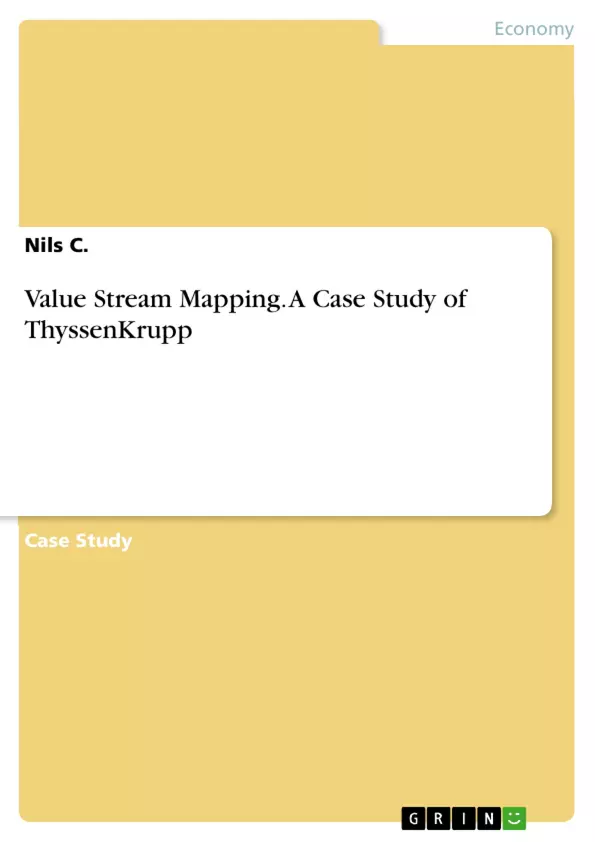This paper demonstrates and analyses the current state of the material and information flow across the supply chain at ThyssenKrupp. The objective of the prepared VSM is to identify causes of waste and reduce them in order to improve the production processes and meet the customer demands. Potential sectors of improvement are identified as Kaizen bursts. By developing and implementing of a desired future state map with a more efficient overall production system, ThyssenKrupp can sustainability improve the productivity and remain competitive. The improvements are focused on takt time, change over time and inventory levels, which leads to a reduction of the lead time.
The automotive industry is one of the largest and competitive sectors in Germany. It offers great opportunities for the application of lean tools to eliminate waste, improve operational processes and gain competitive advantages. ThyssenKrupp are a key supplier in the automotive industry and utilise Value Stream Mapping (VSM) to highlight and reduce non-value-added activities in their manufacturing operation.
Inhaltsverzeichnis (Table of Contents)
- Abstract
- 1. Introduction
- 1.1 ThyssenKrupp
- 2. Literature Review
- 2.1 Value Stream Mapping
- 3. Value Stream Map Methodology
- 3.1 Current State Map
- 3.2 Current State Map with Opportunities
- 3.3 Future State Map
- 4. Conclusion
- References
Zielsetzung und Themenschwerpunkte (Objectives and Key Themes)
This paper explores the application of Value Stream Mapping (VSM) as a lean manufacturing tool within the automotive industry, specifically at ThyssenKrupp, a German multinational corporation specializing in industrial engineering, construction, and steel production. The objective is to identify and reduce waste within the supply chain of ThyssenKrupp's sheet production, ultimately aiming to improve productivity and meet customer demands.
- Value Stream Mapping as a lean manufacturing tool
- Waste reduction in the automotive industry
- Optimizing production processes at ThyssenKrupp
- Improving productivity and meeting customer demands
- Implementing Kaizen bursts for continuous improvement
Zusammenfassung der Kapitel (Chapter Summaries)
- Introduction: The paper introduces the context of the automotive industry and the increasing need for lean manufacturing practices to improve efficiency and competitiveness. It highlights the importance of Value Stream Mapping (VSM) as a tool for visualizing and reducing waste within the manufacturing process. The paper focuses on ThyssenKrupp, a German multinational corporation, and its sheet production operations.
- Literature Review: This section discusses the concept of Value Stream Mapping and its role in lean manufacturing. It emphasizes VSM's effectiveness in identifying and eliminating waste within the production process, ultimately leading to improved efficiency and customer satisfaction.
- Value Stream Map Methodology: This section outlines the methodology used to create the Value Stream Map, including the development of the current state map, the identification of potential improvement opportunities, and the creation of a future state map.
Schlüsselwörter (Keywords)
This paper focuses on the application of Value Stream Mapping as a lean manufacturing tool to optimize production processes at ThyssenKrupp, a German multinational corporation. Key concepts include: Value Stream Mapping, Lean manufacturing, Kaizen bursts, Lead time, Takt time, Change over time, and Inventory levels.
- Quote paper
- Nils C. (Author), 2021, Value Stream Mapping. A Case Study of ThyssenKrupp, Munich, GRIN Verlag, https://www.grin.com/document/1019667



